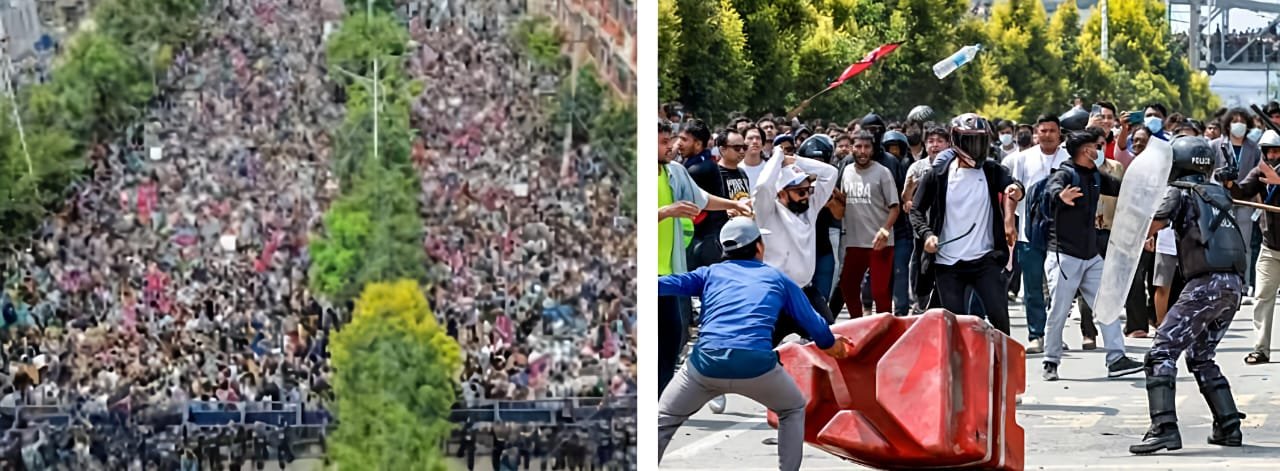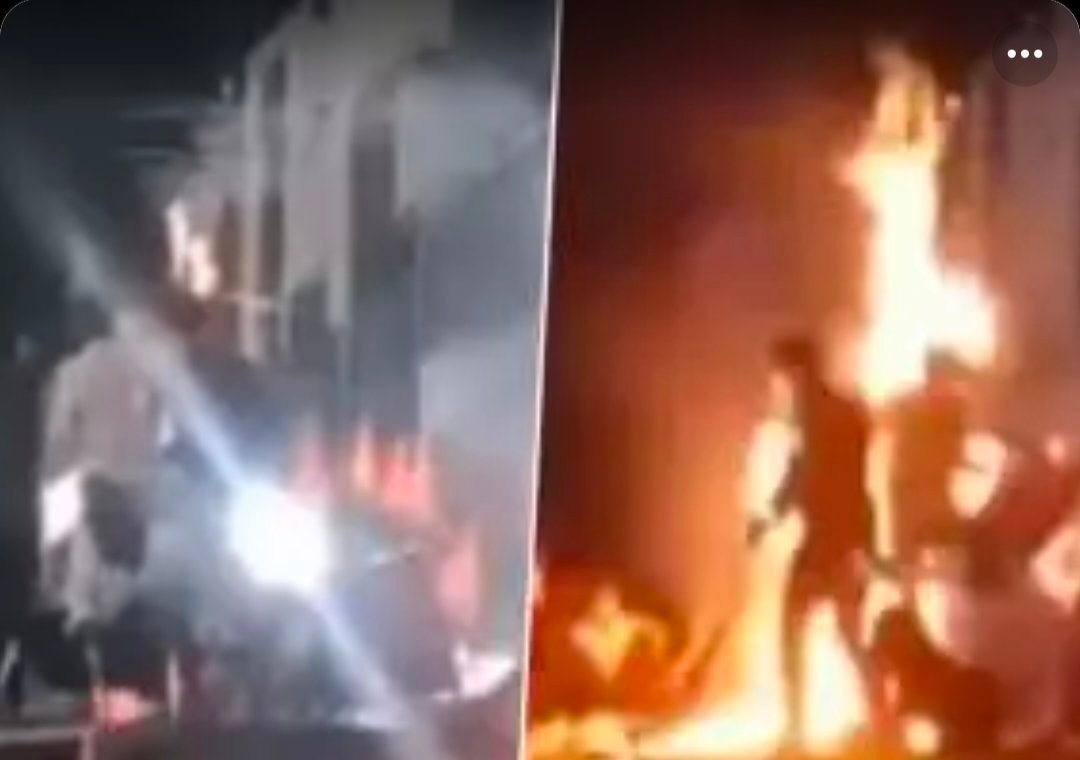“Ohio vs Akula: Will Earth Burn Before Peace Prevails? America and Russia Threaten Armageddon Beneath the Seas”
Washington/Moscow –The clock of destruction ticks louder as the world’s two most formidable nuclear powers square off under the oceans, wielding death machines capable of ending civilizations. In a move that has sent shudders through global diplomatic circles, former U.S. President Donald Trumphas reportedly ordered the deployment of two Ohio-class nuclear submarines near Russian waters—a retaliatory gesture following an inflammatory statement by Russia’s former president, Dmitry Medvedev.
The Pentagon has remained silent. The U.S. Navy neither confirms nor denies the movement. But Trump’s chilling words—”Time for action, not warnings”—have fanned the flames of fear. The threat, though silent and submerged, has echoed through the power corridors of the world. And in Moscow, the reaction is no less ferocious.
Russian MP Viktor Vodolatsky, in an unmistakably hostile tone, declared, “If America believes it can threaten us with Ohio-class submarines, they should count how many Akula-class and Yasen-class submarines are already watching them, deep under their oceans. Russia doesn’t just match their might—we exceed it.”
It’s a new kind of Cold War, no longer just fought in the boardrooms and diplomatic halls, but beneath the oceans, where one mistake could ignite a fireball never seen in human history.
Ohio-Class: The Silent Reaper of the U.S. Navy!
The U.S. Navy operates 14 Ohio-class SSBNs (ballistic missile submarines), forming the cornerstone of America’s nuclear triad. These underwater fortresses are equipped with Trident II D5 ballistic missiles, each capable of carrying multiple nuclear warheads. One Ohio-class submarine can carry up to 20 missiles, with each missile striking targets over 12,000 kilometers away.One such vessel lurking near Russian waters could wipe entire cities off the map—within minutes.
But the Ohio-class is not alone. The United States has deployed three classes of fast-attack nuclear submarines (SSNs):
- Virginia-class,
- Seawolf-class, and
- Los Angeles-class (688-class).
These attack submarines are armed with Tomahawk cruise missiles, Harpoon anti-ship missiles, and MK-48 torpedoes, making them the ideal hunters of enemy fleets and submarines. The Virginia-class, in particular, is considered the Navy’s most advanced undersea war platform, designed for covert operations, surveillance, and surgical strikes.
The U.S. Navy boasts 24 Virginia-class submarines, with names like USS North Carolina, USS Missouri, and USS Hawaii, silently patrolling global waters.
The Seawolf-class—limited to just three due to its enormous cost—remains a feared name in undersea warfare. It lacks vertical launch tubes but more than compensates with immense stealth and aggressive firepower.
Meanwhile, the backbone of America’s Cold War-era deterrence remains the Los Angeles-class. Nearly 24 submarines from this class remain in active service, evolved through generations to survive and strike in the deadliest combat zones of the world’s oceans.
Russia’s Fury Unleashed: Akula and Borei Class Rise!
Russia’s answer to America’s undersea menace is formidable and fearsome.The Russian Navy operates over 60 submarines, including 14 SSBNs—primarily from the Borei-class and the Delta IV-class. The Borei-class, Russia’s pride, carries 16 RSM-56 Bulava SLBMs, capable of flying at hypersonic speeds, evading all known missile defense systems. These submarines also host 533mm torpedo launchers, anti-submarine rockets, and seabed mines.
Each Borei-class submarine has a crew of over 100 and can stay hidden under water for months, lurking in silence, waiting for orders to unleash destruction.
Replacing the aging Delta IV and the legendary Typhoon-class, Borei submarines represent a new generation of Russian sea dragons.
The more aggressive counterpart lies in Russia’s fast-attack arsenal. The Yasen-class submarines—smaller, deadlier, and smarter—are a direct response to America’s Virginia-class. Russia currently operates four Yasen-class SSNs, armed with 3M54 Kalibr cruise missiles and P-800 Oniks anti-ship missiles, giving them both land-strike and anti-carrier capabilities.
Their sleek designs reduce crew requirements and maximize stealth. These submarines are built to slip past sonar detection and hit before the enemy realizes they are being watched.
But the deadliest jewel in Russia’s underwater crown remains the Akula-class—a nuclear-powered fast attack submarine with enough firepower to turn an entire fleet into ashes.
Five Akula-class submarines remain active, patrolling oceans far and wide. Known for their speed, depth capability, and long-endurance patrols, they are the silent ghosts of the sea. Armed with torpedoes, cruise missiles, and tactical nukes, an Akula can stalk an Ohio-class sub and strike it down—if war breaks loose.
The New Cuban Missile Crisis?
As military analysts compare the unfolding events to the 1962 Cuban Missile Crisis, tensions mount. The only difference—this time the danger lies beneath the sea, away from satellites and news cameras, where detection is difficult, and decisions are split-second.
The Ukraine war, increasing NATO-Russia tensions, and a series of miscommunications have already pushed global diplomacy to the edge. Now, the deployment of strategic submarines marks a new height of provocation.
Could a near-collision underwater trigger World War III?
Could a false sonar ping lead to a retaliatory strike?
Could the clash of metal beneath the waves mark the end of humanity above?
These questions haunt military commanders and policymakers alike.
Conclusion: Edge of Oblivion
The underwater war games between Ohio and Akula are not just displays of power—they are messages sent with steel and uranium, with death in every torpedo tube.
The silence beneath the waves is deceptive.
Both America and Russia are now rattling nuclear sabers in the most dangerous way possible. The submarines may be invisible, but their presence is louder than any battlefield roar.
The world stands at the brink once again.
And if reason fails, if diplomacy is dismissed, the oceans may be the first to boil in nuclear fire…
…followed swiftly by the skies above and the cities below.
Earth waits—holding its breath.
Will peace surface, or will the abyss swallow us all?















